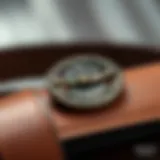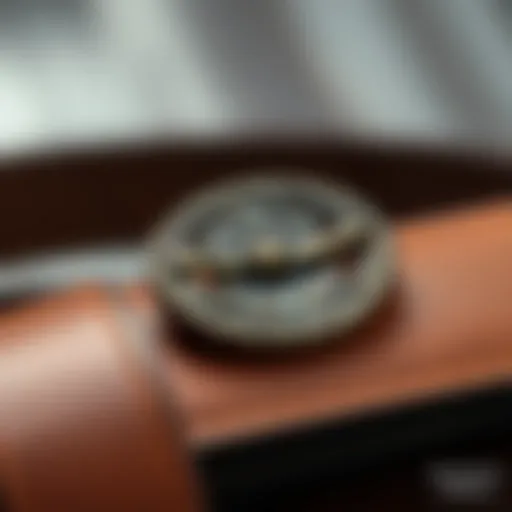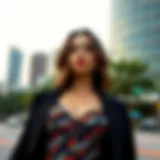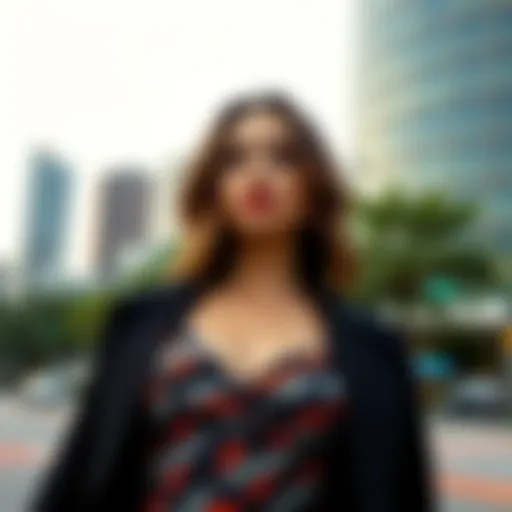Gothic Aesthetics in Modern Fashion Trends
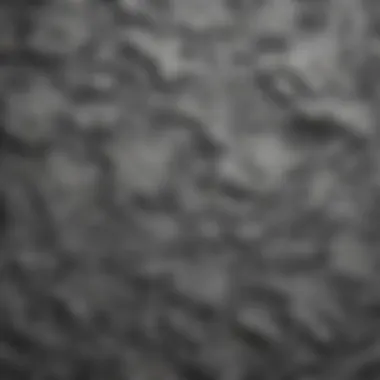

Intro
Gothic fashion, a blend of history, art, and personal expression, has clawed its way back into the modern spotlight. Its resurgence in today’s clothing culture is not just a passing phase; rather, it's a statement of individuality and a nod to the rich tapestry of styles that preceded it. The allure of this distinctive aesthetic can be felt in today’s runways and streetwear alike, providing inspiration for both fashion enthusiasts and everyday casual dressers.
Understanding the roots of gothic fashion can shed light on its relevance in contemporary trends. This exploration will take us deep into its history, identifying the cultural influences that shaped its evolution over time. The stigmas surrounding gothic styles may linger, but amidst those shadows lie powerful narratives that affect how people express their identities today.
As we journey through the intricate layers of gothic aesthetics, we’ll also identify key aspects such as current trends within clothing and practical style tips for incorporating gothic elements into one's wardrobe. This guide is designed to offer a comprehensive perspective, transforming perceptions and allowing individuals to confidently embrace gothic fashion while crafting a unique personal style.
In the sections that follow, we'll dissect current trends and provide style tips that encourage readers to mix and match their clothing creatively. We will unravel the depth of gothic aesthetics, providing valuable insights into how it can influence contemporary fashion choices—ultimately inviting all to dance delightfully with darkness.
Understanding Gothic Fashion
The fascination with gothic fashion lies not just in its dark aesthetic but in its deeper cultural implications. Grasping the essence of gothic fashion is essential for anyone wishing to understand contemporary trends. It's an exploration of identity, rebellion, and the longstanding human connection to art and expression through clothing.
Defining Gothic Aesthetics
Gothic aesthetics encompass a rich tapestry of visuals characterized by dark colors, intricate detailing, and a romantic yet haunting vibe. Think of a moonlit night wrapped in shadows and whispers. The imagery often reflects themes of melancholy and beauty, blending elements of nature with the macabre. It evokes feelings and environments that transcend typical fashion.
Core elements of gothic aesthetics include:
- Color Palette: Typically dominated by blacks, deep purples, and reds, reminiscent of twilight or twilight.
- Materials: Fabrics like velvet, lace, and leather draw from historical influences.
- Silhouettes: Flowing garments and tailored pieces give off an elegant, often Victorian-inspired look.
This precise visual language connects back to various cultural symbols, providing insight into the identity and purpose behind such choices.
Historical Context and Origins
To understand the roots of gothic fashion, we need to look back further than almost any contemporary designer is prepared to acknowledge. The late 18th century gave birth to the Gothic Revival, a reaction against the rationalism of the Enlightenment and a search for the sublime in nature and art.
As we journey through history, we see the influence of literature, such as Mary Shelley's Frankenstein and Bram Stoker's Dracula. These narratives shaped a fascination with both horror and romance, peppering the fabric of society with rich storytelling that dawned into fashion.
The rise of counter-cultures in the late 20th century facilitated a rebirth of these motifs. The punk movement, for instance, influenced goth culture in the 1980s, characterized by an explosion of creativity that merged dark aesthetics with a rebellious spirit. The unyielding nature of this aesthetic roots itself in expressions that push against the modish currents of society. As we peel back these layers, the connection between gothic fashion and its historical pathways becomes clear, merging the past with the evolving narrative of style.
"Gothic fashion is not a phase but a lens through which many perceive the world."
This exploration ultimately sheds light on how gothic elements not only enhance personal expression but also touch upon universal themes of humanity.
Cultural Influences on Gothic Fashion
Gothic fashion stands on the shoulders of diverse cultural influences, creating a tapestry woven from the threads of literature, music, film, and visual arts. Each element has contributed uniquely to shaping the aesthetic we see today. Understanding these cultural underpinnings not only enriches our appreciation of gothic styles but also enhances our ability to translate them into modern fashion.
The embrace of gothic aesthetics isn't just a fleeting trend; it's a complicated mix of expressions fueled by radical ideologies and creative ventures. Whether it’s the brooding romanticism found in literature or the muffled whispers of underground music scenes, these influences reflect the human condition and resonate across time. The following sections explore these facets in detail, highlighting their significance in the evolution of gothic culture and its current revival in contemporary fashion.
Literature and Art in Gothic Culture
Literature has long served as a pivotal influence in gothic fashion, often portraying themes of darkness, despair, and romance. From the haunting tales of Edgar Allan Poe to Mary Shelley's Frankenstein, literary works have painted mental images that echo through the style choices of gothic enthusiasts. These narratives feed into the visual aesthetics of black lace, flowing silhouettes, and dramatic makeup, allowing fans to channel characters or emotions from the pages and bringing them into everyday life.
Additionally, the art world has played a significant role. Art movements such as Romanticism, with its emphasis on emotion, nature, and individual expression, have provided visual inspiration—think of Caspar Friedrich's landscapes that evoke a sense of the sublime. These influences surface in gothic fashion through the integration of ornate prints, ethereal fabrics, and moody color palettes that resonate with similar sentiments. In many ways, literature and art aren't just content; they’re vital components in the fabric of gothic identity.
Music and Subcultures
Music has been a battleground of cultural expression, acting as both a mirror and a mold for gothic fashion. The late 1970s and 1980s witnessed the rise of post-punk bands like Bauhaus and Siouxsie and the Banshees, whose aesthetics transcended mere sound and spilled into fashion. With heavy eyeliner and dark clothes, these artists cultivated a specific image that many fans emulated, intertwining music and style in an inseparable bond.
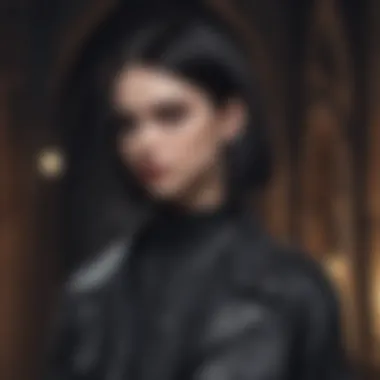

Beyond the genres directly associated with goth, subcultures such as the influential punk scene also laid groundwork. The punk movement's ethos of non-conformity and rebellion found a home in gothic styles, creating hybrids marked by bold accessories and distressed clothing. This symbiosis allowed individuals to express their social discontent while indulging in a fashion that felt authentic to their identities. Ultimately, music acts like a pulse within the gothic community, offering rhythm to how one visually manifests their inner self.
Film and Visual Media
Films have brought gothic aesthetics to mainstream visibility, magnifying its cultural reach. Iconic movies like The Crow, with its haunting visual style, or Interview with the Vampire, steeped in both sensuality and sorrow, plaster vivid imagery of gothic fashion onto the silver screen. These visual narratives amplify the allure, inciting fascination with the aesthetic while simultaneously shaping public perception.
Visual media transcends traditional film as well; filmmakers and photographers utilize elements like chiaroscuro lighting, rich textures, and eerie settings to create atmospheres that attract viewers to the gothic aesthetic. Similarly, platforms like Instagram and TikTok allow users to curate their own visual narratives, where gothic elements can be portrayed in both overt and subtle ways, enabling fresh forms of self-expression among a younger audience.
"Fashion is the armor to survive the reality of everyday life."
— Bill Cunningham
In essence, cultural influences on gothic fashion encompass a wide range of artistic expressions deeply rooted in emotion and identity. The fusion of literature, music, and visual media not only informs the aesthetic choices but enhances its relevance in contemporary settings, weaving a rich narrative that continues to evolve.
Modern Adaptations of Gothic Style
The evolution of gothic fashion, especially in its modern incarnations, is an emblem of how past aesthetics can resurface and find new life in the contemporary fashion landscape. This juxtaposition with modern styles is not merely a trend; it is indicative of a deeper cultural shift where identities become canvases for self-expression. By examining these adaptations, we uncover significant elements that benefit both creators and consumers alike.
Gothic Fashion in High Street Stores
Today, an increasing number of high street brands have started to incorporate gothic elements into their offerings, making this once-niche style accessible to a broader audience. Chains like H&M and Zara often launch limited-edition collections that feature dark palettes, lace accents, and Victorian-inspired silhouettes indicative of the gothic revival.
Through collaborations or seasonal lines, these brands have nuanced the definition of gothic fashion. The appeal lies not only in the aesthetic but also in the chance to stand out in a sea of sameness. Consider the allure of a black oversized sweater with intricate lace detailing over a pair of distressed jeans. This combination maintains comfort without sacrificing style.
When shopping at high street stores for gothic pieces, keep an eye out for:
- Dark florals and intricate prints: These can elevate any outfit and offer versatility.
- Layered clothing: The aesthetic often thrives on layering, allowing for more creative outfit choices.
- Accessories: Statement jewelry such as chokers or dangling earrings can make an outfit pop.
Purchasing gothic-inspired attire from mainstream retailers does raise questions about authenticity and the potential dilution of the style's original significance. However, it also affords opportunities for exploration, revealing to many the beauty and narrative inherent in gothic fashion without needing to plunge into its deeper subcultures.
The Role of Social Media and Influencers
In the digital age, the rise of social media platforms has drastically changed how fashion trends emerge and proliferate. The realm of gothic fashion is no exception. Influencers on platforms like Instagram and TikTok play pivotal roles in shaping perceptions and providing guidance on how to integrate gothic elements into daily wear.
This visibility has democratized gothic fashion, allowing enthusiasts to find inspiration from a variety of sources without needing to be entrenched in traditional goth subcultures. Influencers showcase various styles, from grunge-inspired ensembles to elegant neo-victorian outfits, and their diverse interpretations help broaden the audience. Some key factors contributing to this phenomenon include:
- Authenticity: Many influencers share their personal stories, merging lives with fashion, which strikes a chord with followers.
- Engagement: The interactive nature of platforms encourages dialogue and discussions about style, choices, and inspirations, creating community bonds.
- Accessibility: With smaller brands often featured alongside mainstream offerings, consumers have a wider range of products to choose from, which suits different budgets.
Social media not only promotes gothic style but also fosters a sense of belonging among followers who resonate with the aesthetics.
In summary, the interactions between high street offerings and influencer culture underscore the modern adaptations of gothic fashion. These elements create a space where consumers can explore and express their identities in ways that traditional mediums may not allow.
Psychological Aspects of Gothic Fashion
Gothic fashion is much more than a set of dark clothes or an aesthetic; it serves as a lens through which many individuals express their inner selves and navigate complex emotional landscapes. The psychological aspects of this style intertwine with notions of identity, self-expression, rebellion, and non-conformity. Understanding these elements can provide insights not only into personal style choices but also into broader societal trends.
Identity and Self-Expression
At the heart of gothic fashion lies a powerful vehicle for identity formation. Many who embrace this style do so as a means of expressing their individuality, often in a world that expects conformity. The careful selection of clothing pieces—be it a flowing black dress, lace-up boots, or intricate jewelry—allows wearers to curate an image that resonates with their inner beliefs and feelings.
This connection is particularly salient for teenagers and young adults, who may grapple with the quest for self-identity during formative years. Gothic elements, often steeped in themes of darkness and romance, provide a unique space for self-exploration. Some are drawn to the mystique of the gothic aesthetic as a form of art, while others see it as a shield against societal expectations.
"Gothic fashion transcends mere clothing; it becomes a canvas for expressing what lies beneath the surface, a rebellion against the mundane."
This form of expression can foster a sense of community among like-minded individuals. Online forums and social media platforms offer opportunities to share styles, ideas, and discussions, further reinforcing a group identity that embraces individuality and creativity. In this way, gothic fashion transcends personal expression and taps into larger narratives of belonging.
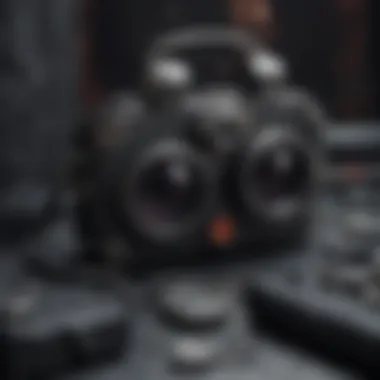

Rebellion and Non-Conformity
Rebellion is a thread that runs deeply through the tapestry of gothic fashion. Many followers see their sartorial choices as stances against the mainstream. It embodies a spirit of non-conformity that’s both appealing and liberating. Choosing darker colors, unconventional patterns, and unique cuts can often signal a refusal to blend in with societal norms.
This rejection of the ordinary resonates with those who feel marginalized or alienated, offering them a sense of empowerment. For some, dressing in gothic styles is not simply about aesthetics; it’s also a profound statement against societal pressures, whether it's the expectation to adhere to conventional beauty standards or to fit within specific molds at work or school.
In many cases, gothic fashion is a reclamation of personal history, identities that have been overlooked or misunderstood. Individuals often pull from various subcultural influences, weaving their unique stories into the fabric of what they choose to wear. This rebellion isn't just an act of defiance; it's an embracing of one’s own truth in a world that frequently demands conformity.
By understanding the psychological aspects of gothic fashion, one gains a broader view of its significance. Many do not simply follow trends; they engage in a dialogue of self-discovery, defiance, and artistic expression. The emotional landscape of gothic fashion can shift perceptions of beauty and identity, reshaping how society views individuality.
In essence, gothic fashion serves as both a reflection and a catalyst, enabling individuals to express deep-rooted feelings while simultaneously challenging prevailing cultural narratives. It invites exploration into the murky waters of identity, making every lace and leather choice resonant with meaning.
Incorporating Gothic Elements into Everyday Wear
In today’s fast-paced fashion world, embracing gothic elements in everyday attire presents not just a stylistic choice but an opportunity for personal expression. The act of incorporating gothic aesthetics can breathe new life into conventional wardrobes, introducing a unique flair that sets individuals apart. Those who choose to dance with dark romanticism often find that these elements not only enhance their style but also serve as a canvas for expressing their distinct personalities and emotional narratives. Let's dive deep into what this incorporation looks like and the essence it can bring.
Key Pieces for a Gothic Wardrobe
Footwear Options
When looking to steep one's attire in gothic vibes, the importance of footwear cannot be overstated. Gothic footwear usually characterizes itself by bold designs, often featuring thick soles and unique embellishments. Boots, particularly those made of leather with rivets, buckles or dramatic laces, serve as the backbone of a gothic wardrobe. They offer both durability and dramatic flair, which is a potent combo for anyone looking to make a statement.
The unique feature of such boots lies in their ability to balance functionality with style. However, comfort should not be underestimated; an ill-fitting pair can dampen the confidence of their wearer.
- Key characteristics:
- Advantages:
- Sturdy construction for longevity
- Variety in design from combat boots to platform styles
- Versatile for various outfits
- Adds a strong visual element to the overall look
Outerwear Choices
Outerwear is a crucial component in layering gothic aesthetics into everyday wear. Long coats, capes, or jackets with flowing silhouettes are staples, often featuring dark hues and rich textures. A standout piece might include a trench coat with dramatic flare; it can transform a mundane outfit into something evocative. This layer not only provides warmth but also instills an air of mystery.
- Key characteristics:
- Advantages:
- Dramatic lengths and shapes that add intrigue
- Rich textures like velvet or leather that catch the eye
- Functional for varying weather
- Enhances the gothic aesthetic while providing comfort
Accessories that Matter
Accessories hold significant power in conveying gothic charm. They can instantly chic up a plain outfit or give a polished look a touch of the macabre. Items such as chokers, layered necklaces, or oversized rings offer a way to delve into the gothic realm without overshadowing one’s personality.
- Key characteristics:
- Advantages:
- Intricate designs that attract attention
- Use of materials like silver or gemstones to elevate style
- Easy to mix and match with different outfits
- Allow for personal expression without overwhelming the ensemble
Mixing Gothic with Contemporary Styles
Bringing together gothic style and contemporary trends can be a thrilling challenge. While one can freely express themselves by fusing different aesthetics, doing so smoothly requires an eye for balance. Think along the lines of pairing a classic black lace blouse with tailored jeans, or blending flowy skirts with modern sneakers. The key resides in a harmonious combination that allows one to maintain individuality while embracing contemporary ease.
Here individuals can explore, adapt and make their style their own, showing other fashion enthusiasts their ability to juxtapose old with new in an artistic way that feels authentic to them.
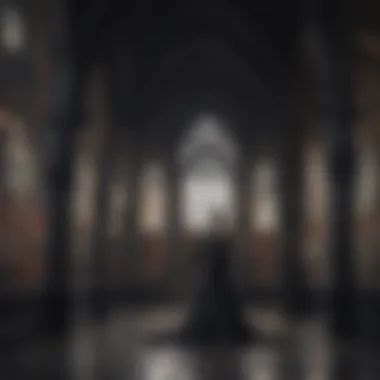

The Artistic Representation of Gothic Fashion
Gothic fashion, at its core, transcends mere clothing to become a vibrant art form. The intersection of visual aesthetics and wearable designs reveals how this style expresses deep-seated emotions, cultural histories, and philosophical musings. It’s this very blend that unravels the importance of artistic representation in gothic fashion, making it pivotal within contemporary culture. With designers and artists drawing from both historical and modern inspirations, it crafts a narrative that resonates with those who appreciate the macabre beauty and intricate storytelling woven into each piece.
Artistic representation allows gothic fashion to move beyond superficial aesthetics into a realm where it can provoke thought, challenge norms, and inspire individuals. In a world where fast fashion often prioritizes trends over substance, the deliberate choices made by gothic designers mark a rebellion against such fleeting notions. Gothic fashion thus stands as a testament to self-expression, authenticity, and a more thoughtful approach to clothing.
"Fashion is the armor to survive the reality of everyday life." – Bill Cunningham
This sentiment rings especially true within gothic fashion, where the clothes worn serve as both shield and statement.
Fashion Shows and Exhibitions
Fashion shows and exhibitions play a fundamental role in illustrating the artistic representation of gothic fashion. These events provide a platform for designers to showcase their creativity and elaborate visions, transforming runways into galleries for personal expression. Notably, the darker aesthetics of gothic elements invite audiences to experience a multifaceted narrative, connecting them with the emotions and inspirations of the creators.
Some significant aspects of these shows include:
- Visual Storytelling: Designers utilize color palettes that range from deep blacks to stark whites, imbuing each garment with a narrative quality.
- Bold Presentations: The theatricality often accompanying gothic fashion shows creates an immersive experience. Models may wear dramatic makeup, intricate hairstyles, and unusual accessories, reinforcing the overarching narrative and evoking emotions in the audience.
- Interactive Exhibitions: Galleries that display gothic fashion often incorporate multimedia elements such as soundscapes and art installations, allowing viewers to engage with the work on a deeper level.
Iconic Designers in Gothic Fashion
The contributions of iconic designers cannot be overstated. These visionary artists shape gothic fashion by pushing boundaries and redefining conventions. Notably, their work often embodies a blend of craftsmanship, philosophy, and avant-garde creativity. Some legendary names in this sphere include:
- Alexander McQueen: Known for merging fashion with art, McQueen’s collections often draw from themes of nature, death, and identity, showcasing the darker side of beauty.
- Ann Demeulemeester: A pioneer of the Antwerp Six, her designs present a poetic darkness, often characterized by monochromatic colors and flowing silhouettes that evoke an ethereal quality.
- Vivienne Westwood: While not exclusively gothic, Westwood’s punk-infused pieces often incorporate gothic elements, challenging traditional norms and being unapologetically bold.
Through their innovations, these designers not only maintain gothic fashion’s relevance but also elevate it to an artistic dialogue that contributes to wider cultural movements.
Ultimately, the artistic representation of gothic fashion serves as a powerful reminder of the depth and complexity that fashion can embody beyond fabric and design. It encapsulates a worldview, allowing individuals to explore their identities and engage in a conversation that is both timeless and contemporary.
Future of Gothic Fashion
The future of Gothic fashion presents a fascinating canvas, filled with evolving trends and changing consumer values. As the design landscape shifts and adapts to cultural dynamics, understanding how Gothic elements fit into modern contexts becomes paramount. This section dives into what we can expect in the years to come, especially concerning emerging trends and sustainability issues.
Emerging Trends to Watch
Several trends are emerging in the realm of Gothic fashion. These aren't mere whims of the marketplace; they are reflections of broader social changes and aesthetic preferences.
- Revival of Vintage Styles: Many designers are resurrecting iconic pieces from past decades, with an emphasis on the Victorian and pre-Raphaelite eras. Expect to see high collars, lace accents, and corsetry making a substantial comeback.
- Tech-Infused Fashion: With the rise of technology in fashion—think smart fabrics and 3D printing—Gothic designs are being influenced by futuristic aesthetics, combining dark elements with sleek, modern silhouettes.
- Gender Fluidity in Design: Designers are increasingly blurring the lines between masculine and feminine lines. The unisex approach will likely gain more traction, allowing for greater personal expression regardless of traditional categories.
- Gothic Bohemian: A merging of Gothic styles with bohemian influences highlights free-spirited vibes. Layers, oversized garments adorned with rich textures and patterns, and earthy color palettes are on the rise.
These trends point towards a future where Gothic fashion is not just a niche but a versatile descriptor of personal style that can be adapted to broader fashion contexts.
Sustainability and Ethical Considerations
The importance of sustainability in the fashion industry cannot be overstated. Gothic fashion, like many other segments, faces an imperative regarding its environmental and ethical footprint. The following considerations on sustainability are ripe for exploration:
- Eco-Friendly Materials: Designers are increasingly opting for sustainable materials like organic cotton, hemp, and recycled fabrics. In Gothic fashion, this could mean using cruelty-free leather alternatives, organic cotton lace, and dyes that do not harm the environment.
- Upcycled Fashion: Upcycling allows for a second life to clothing that may otherwise be tossed aside. This can involve taking materials from vintage costumes or thrift store finds to create new, unique pieces that align with Gothic aesthetics, reducing waste.
- Ethical Production Practices: Transparency is key. Brands focusing on ethical production practices are set to gain favor among consumers who are mindful of labor practices. Fair Trade practices, local workshops, and co-ops may become increasingly appealing to Gothic fashion enthusiasts.
- Slow Fashion Movement: The focus on quality over quantity is increasingly relevant. Consumers are shifting toward investment pieces that have longevity rather than mass-produced items that contribute to fashion clutter.
A shift to more sustainable practices means that the Gothic fashion scene can retain its unique, expressive nature while also addressing growing concerns about environmental responsibility.
"The future of Gothic fashion is intrinsically linked to a broader consciousness about personal and planetary ethics—a balance of allure and accountability."
Finale
As we wrap up this exploration of gothic fashion within the contemporary landscape, it’s clear that this aesthetic is more than just a fleeting trend. The timeless appeal of gothic fashion lies in its ability to transcend mere clothing, weaving itself into the very identity of those who dare to sport it. By integrating elements of gothic styles with modern aesthetics, fashion enthusiasts not only express individuality, but also connect with a rich tapestry of historical and cultural narratives.
The convergence of gothic elements with contemporary fashion taps into a broader social conversation about non-conformity, self-expression, and the quest for authenticity in today’s fast-paced world. The appreciation for such styles fosters community and allows for creative expression that is deeply personal. Whether it’s through the wear of a strikingly dark ensemble adorned with lace and leather, or simply the choice of accessories that echo gothic motifs, the ways in which individuals incorporate these elements are as unique as the wearers themselves.
The Timeless Appeal of Gothic Fashion
The enduring nature of gothic fashion can be attributed to several factors:
- Historical Significance: Gothic fashion is rooted in a rich history that resonates with many people. The very origins of gothic styles, influenced by literature, art, and music, provide a context that elevates it beyond just aesthetic choices.
- Cultural Relevance: Gothic aesthetics stimulate discussions around the themes of death, darkness, and the macabre, which many find intriguing. This connection to deep emotional states fosters a strong tie to the style.
- Personal Expression: Many individuals view gothic fashion as a mode of self-expression, a chance to showcase their inner thoughts, feelings, or even beliefs without the constraints of mainstream styles. This has made the gothic aesthetic a favored choice among those who feel marginalized by traditional fashion norms.
- Intermingling with Other Genres: The versatility of gothic fashion allows for seamless incorporation into various styles. For example, mixing gothic elements like lace, leather, or silver accents with bohemian or punk styles creates hybrid looks that resonate with diverse audiences.




